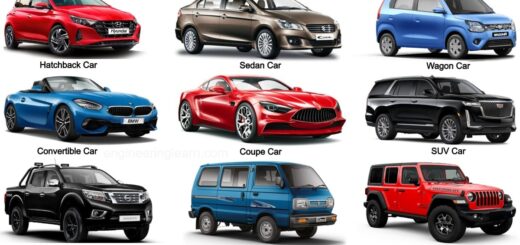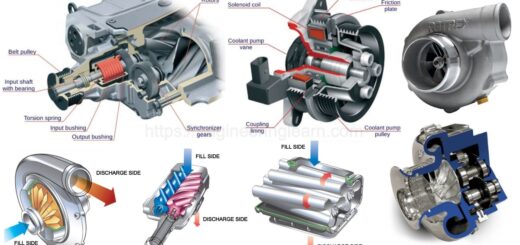Snow Chains: Definition, Types, Uses, Pros & Cons [Complete Guide]
![Snow Chains: Definition, Types, Uses, Pros & Cons [Complete Guide]](https://engineeringlearn.com/wp-content/uploads/2023/03/Snow-Chain-1024x539.jpg)
Snow Chains Introduction:
Snow Chains: Definition, Types, Uses, Pros & Cons [Complete Guide]: – While considering snow chains, there are several choices to browse, as well as a few advantages to utilizing them. As well as getting the right chains, there are additionally certain tires that are recommended for use with chains, allowing the snow chains to work all the more proficiently and more effectively. Snow chain laws and regulations are different relying upon the state or region. In some countries, snow socks are not considered as a tire chain identical when snow chain regulations are put into effect. Although this might be the situation, some individual snow sock brands like AutoSock are endorsed according to the related governing body of the area.
What are Snow Chains?
Snow chains are any system of chain that is designed to cover a tire or wheel put up together to offer better traction in the snow. In particular, snow chains are utilized on snow, however, they are likewise effective automotive accessories for travel on ice or any frozen surface. Snow chains provide a removable choice for driving between clear and snow-covered streets. Unfortunately, they can be hard to install in the event that you are not familiar with the procedure. In the event that you have a two-wheel-drive vehicle, you ought to use chains on all four tires for the best response and handling.
Some of snow chain designs are accessible. Everything from basic wrap around tire chains, which are held tight in place by tensioners, to chains that only cover the tread pattern of a tire while being mounted to the outside of a wheel. Such options make snow chains possibilities for some of the finest performance automobiles which have minimal inward wheel clearance. Most snow chains are sold in pairs and could possibly accompany the tensioners necessary to mount the chains on your wheels.
Snow chains are a cheap, temporary solution that permits you to move your vehicle securely in deep or icy snow. Assuming that you really do live in a mountainous region, you’ll need to keep chains in your vehicle the entire winter regardless of whether your vehicle is sporting its winter tires.
How do Snow Chains Work?
Snow chains can dive into frozen surfaces more so than even a quality snow tire. Indeed, even studded tires lack the ability to keep up with maintaining steering and braking like tires with snow chains. They can’t be driven at high speeds. In weather bad enough to require snow chains, high-speed travel isn’t recommended. One tip that is much of the time given in regards to snow chains is to make sure to mount them before they’re required. At the end of the day, when the roads simply begin to be covered in snow, it’s a great chance to put them on. Again and again, individuals will wait until the snow is as of now piled high prior to accommodating their tires with chains, and that can be too late.
Why are Snow Chains Used?
Snow chains are utilized for trekking across bumpy regions or flat districts that are densely covered in snow all year or throughout the cold weather months. At the point when there is a lot of snowfall, the snow can be packed down the more individuals travel on it, resulting in elusive and perilous streets. Two key things that characterize how snow chains work are traction and wheel turn.
Adding chains to your vehicle’s tires builds the grip of your tire on snow and ice-covered streets. Having more traction on your tires allows for more control while driving. Because of the increased traction, your vehicle’s tires decrease wheel spin or turn, which happens when “the force delivered to the tire tread through the engine is more prominent than the tread-to-surface friction accessible, which makes the tires lose traction”.
Types of Snow Chains
1. Diamond Tire Chains
These are the original types of snow chains. They incorporate strings of metal chain joins forming a precious stone design. The diamond design size varies relying upon how much snow or ice you are confronting. This sort of snow chain “works together to make a cross-segment plan that covers the whole tire. Since this kind of chain has a higher contact surface with the ground, it offers the best traction or foothold”, meaning these are the most ideal decision for heavy or weighty snowfall regions.
2. Cable Tire Chains
These are a more modernized variant of the conventional Diamond tire chain and are best for a moderate measure of snowfall. The chains on this variant are scattered, horizontal metal links that interface with a chain crossing the entire circumference of the tire. The spacing and side chain makes it more straightforward to slow down. An advantage of this type of snow chain is that they are lighter while still maintaining traction. They are additionally more smaller links, meaning they can be utilized on probably the smallest wheel wells.
Both of these kinds of tire chains require chain adjusters. Two options are growing in prevalence, spring adjusters and bug bungees. Spring adjusters are pentagonal in shape and made of metal that is associate with the beyond the tire to fix the lateral chains. While they beat out their elastic predecessors, they really do rust which can cause springs to break.
How to Use Snow Chains?
A) Pro-tip
Try not to wait till the snow’s descending thick and fast. Install the chains when snow is approaching to save yourself future exacerbation. On the off chance that you’re not experienced, heavy or weighty snow will only make what can be an awkward task or assignment much more troublesome.
B) Prepare
- Decide if your vehicle is front-wheel, back tire, or all-wheel drive.
- Place the chains on the ground before the drive wheels.
- In the event that the chains have a tensioning framework, ensure the mechanism is outward of the wheel for simple access.
- Straighten or fix the chains and line them up with the tire.
C) Attach
- Slowly or Gradually roll your vehicle forward onto the chains and stop in the center.
- Interface the fasteners on all chains.
- Except if your chains are self-tightining now is the right time to fix or tighten them. They’ll either have a fasteners framework or went with versatile tighteners.
- Make sure that the tires have clearance to move by running your hand to and fro around the highest point of the chains.
D) Drive
- Most makers suggest maximum speed of 30 mph with chains on.
- In the event that you drive too fast, the chains might break, which can scratch up your vehicle’s exterior paint or result in tire damage.
- Try not to hit potholes as this can damage your vehicle and the chains.
- You need to be cautious so as not to accelerate too fast as that can cause tire twist and put weight or stress on the chains.
E) Remove
- Always eliminate your chains prior to driving on the black-top again to avoid breaking them.
- Move the vehicle ahead until the chain fasteners are on top of the wheel.
- Release every latch or fastener and place chains on the ground.
- Delicately drive the vehicle off the chains.
- Wash the chains completely to eliminate dirt, snow, and mud prior to storing them.
Pros of Snow Chains
- One of the advantage of having snow and ice chains is that they are extremely easy to install. The chains go on the tires that are demonstrated in your wheel train. Assuming your vehicle is a real-wheel drive, the chains ought to go on the back wheels. In the event that your vehicle is a front-wheel drive, they ought to do on the front.
- Installation is as simple as wrapping the chains and connecting the two ends. You needn’t bother with any special tools to have the chains on your tires.
- The chains are likewise economical. While taking a look at the cost of the chains, in contrast with what they are utilized for and what they can do, it is not difficult to see that they are worth the price.
- They likewise give traction to your vehicle in places that snow tires, both studded and non-studded, can’t. Chains are particularly good at giving traction with ice patches, packed snow, and deep snow pockets.
- This actually means what is going on you are in with regards to snow roads, you will be prepared. At the point when the temperature decreases, and you end up confronting ice, that is covered also.
Cons of Snow Chains
- With regards to chains on your tires, a winter driving tip would be not to keep them on when snow isn’t on the ground. In certain places, doing so is illegal and is a punishable offense.
- You should keep up with the climate and remove the chains when they are not important to have on. This is on the grounds that driving with chains on your tires when not necessary can cause damage to the roads.
- You might not have any desire to drive at high speeds when you have these chains on. The chains need a little bit of time to sink into the snow to forestall slipping and sliding.
Conclusion
Assuming you’re expecting to put on tire chains, Most likely the weather conditions will not be too favorable. To avoid any difficult circumstances out in the snow, work on installing and removing your chains before your trip. Not exclusively will this save you time, however it will likewise tell you the condition of your chains. It is fundamental to check the laws of the states you anticipate going through. Truck drivers and standard engine vehicles will get a heavy fine in the event that they are not following the chain laws and regulations.
In the event that you sometimes travel through heavy ice and snow, you might need to keep a set of chains in the storage compartment of your vehicle. Likewise, think about talking with an expert on the off chance that you are looking to purchase tires yet not sure which one is best for your specific situation or circumstances.
Content Source: – simpletire, wawanesa, lgttransport













